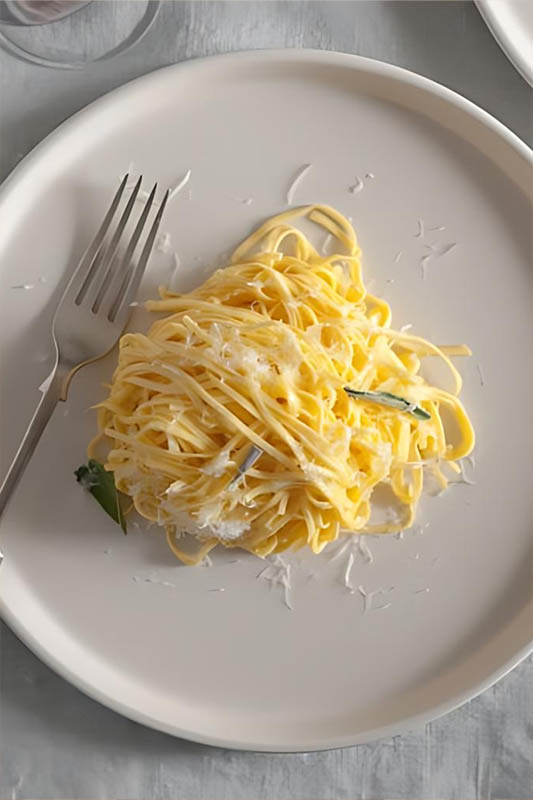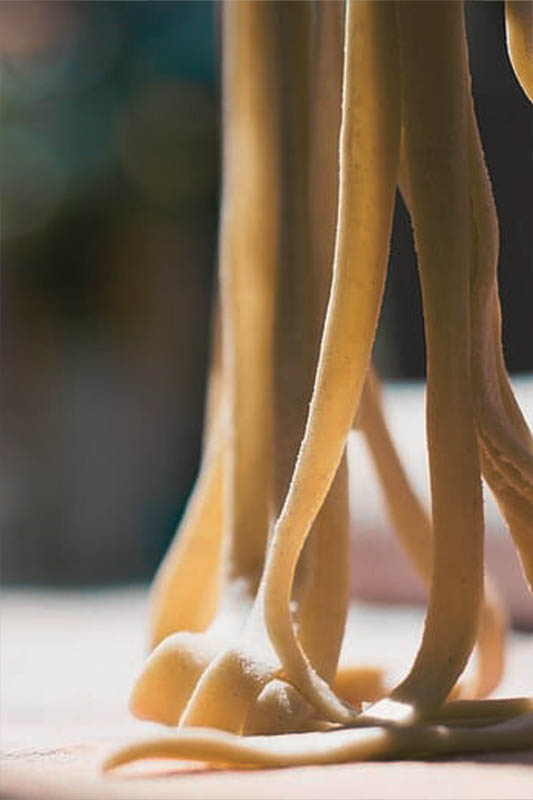Tajarin are one of the most emblematic dishes of Piedmont, particularly from the Langhe region. This thin egg pasta is distinguished by its intense flavor and characteristic golden-yellow color, derived from the “generous” use of egg yolks. Let’s discover together the origins of this traditional dish and the recipe that requires as many as 30 egg yolks (some even use 40!!!!).
The origins of tajarin
In the Langhe, tajarin represent a true culinary institution. Since the Middle Ages, this pasta has been prepared for special occasions, such as weddings and festivities, when the abundance of yolks symbolized prosperity and fortune. The tajarin recipe has been passed down from generation to generation, remaining almost unchanged over time and continues to be appreciated for its simplicity and refinement.
Traditionally, tajarin were served with simple condiments like melted butter and sage, or with meat or offal ragu. Today, they are often accompanied by the prized white truffle from Alba, which enhances their unique and delicate flavor.
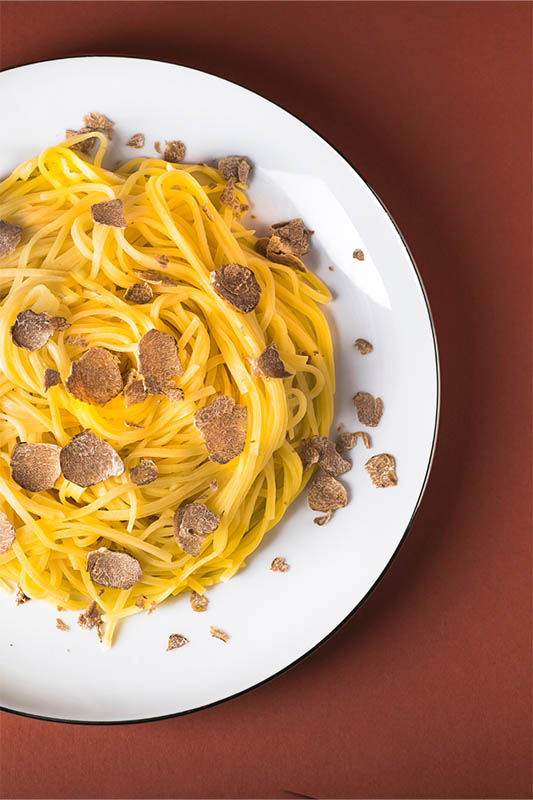
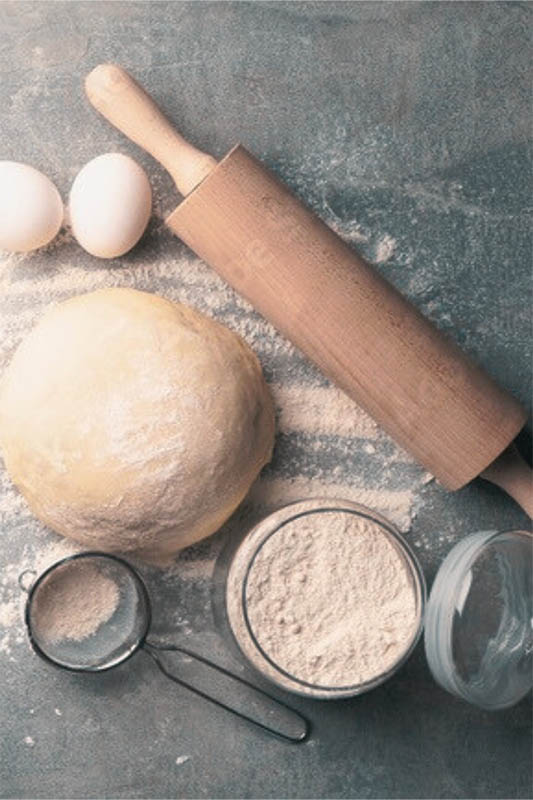
The recipe for tajarin with 30 yolks
Preparing tajarin in the traditional way requires few ingredients but great attention to detail. The uniqueness of this recipe lies in the use of 30 egg yolks per kilo of flour, giving the pasta a rich texture and unmistakable flavor.
Ingredients:
1 kg of flour (preferably a mix of 00 flour and re-milled durum wheat semolina)
30 fresh egg yolks
a tablespoon of white wine (optional)
a pinch of salt
Preparation:
Mix the ingredients: place the flour in a mound on a work surface. In the center, pour the egg yolks and add a pinch of salt. Start mixing with a fork, gradually incorporating the flour.
Work the dough: knead vigorously by hand for about 20 minutes until you obtain a smooth and elastic dough. This step is essential to develop the right texture.
Let it rest: cover the dough with a cloth and let it rest at room temperature for at least 30 minutes.
Roll out and cut the dough: roll out the dough with a rolling pin or pasta machine until you obtain a very thin sheet (about 1 mm thick). Roll up the sheet and cut it into thin strips about 1-2 mm wide, separating them carefully.
Cook the tajarin: bring plenty of salted water to a boil. Cook the tajarin for about 1 minute, until al dente.
How to enjoy tajarin
Tajarin are perfect with melted butter and white truffle shavings from Alba, a combination that enhances the flavors of Piedmontese tradition. You can also serve them with a meat ragu or lighter sauces based on seasonal vegetables. Ermanno makes a version with datterino tomatoes from our garden, toasted pine nuts, and red prawns from Mazara del Vallo that are to die for! In my opinion, they are exceptional even with just butter! If you have alpine butter or centrifuge butter (easier to find), you’ll be licking your fingers!
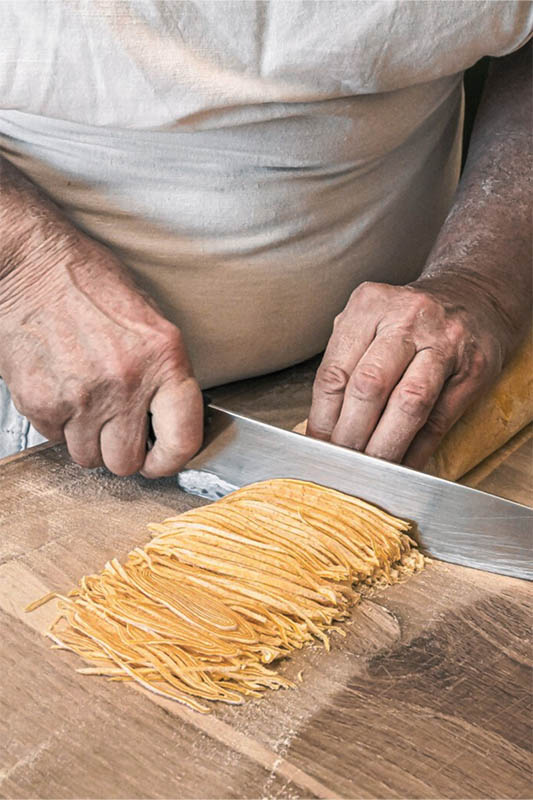
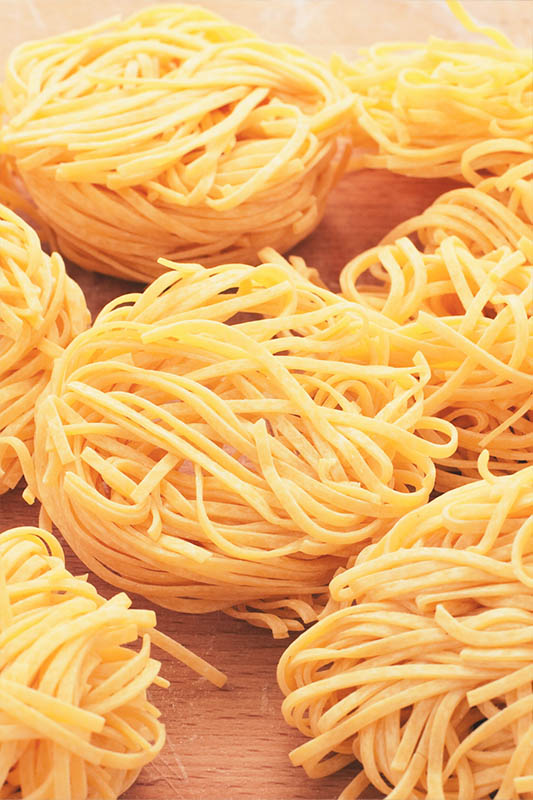
Discover more about Piedmontese tradition
The cuisine of the Langhe is a journey through timeless flavors and traditions. Tajarin, with their simplicity and authenticity, are just one of the many culinary expressions you can discover during your stay in the Langhe. Continue following the Cascina Facelli blog to explore other traditional recipes and find inspiration for your next visit!
Book your stay now at Cascina Facelli and immerse yourself in the beauty and flavors of the Langhe!
